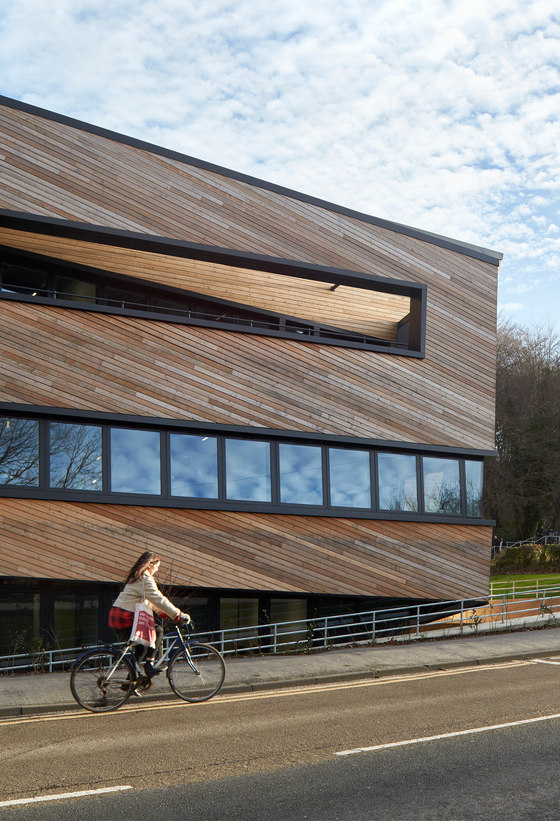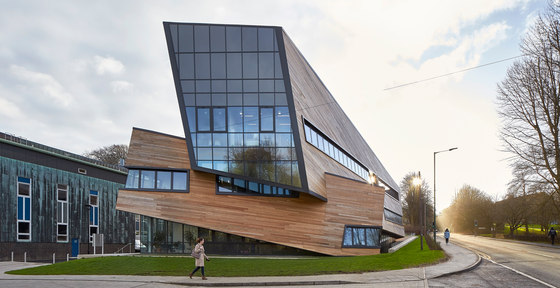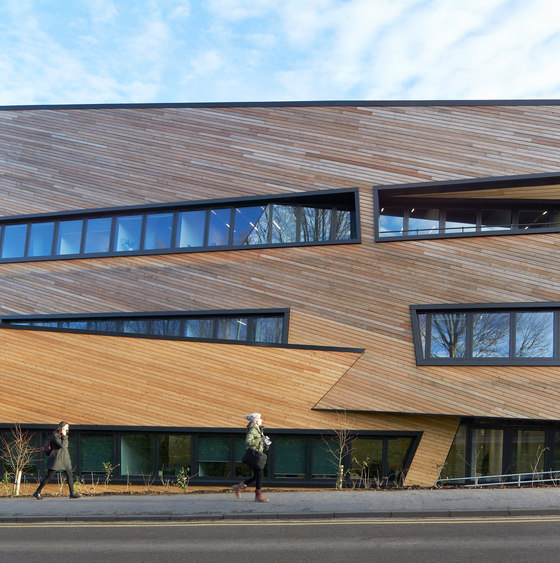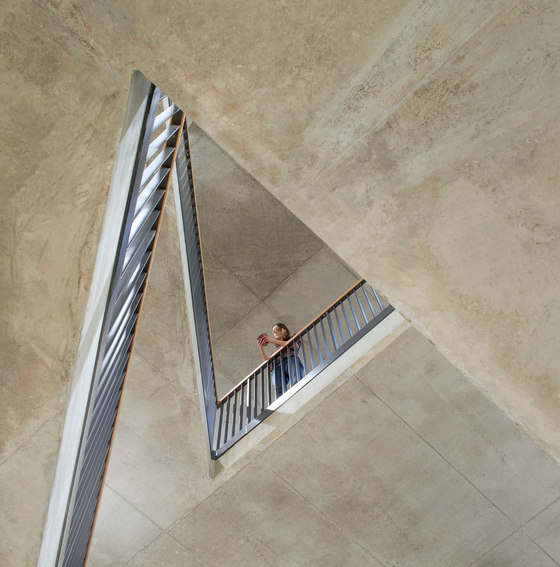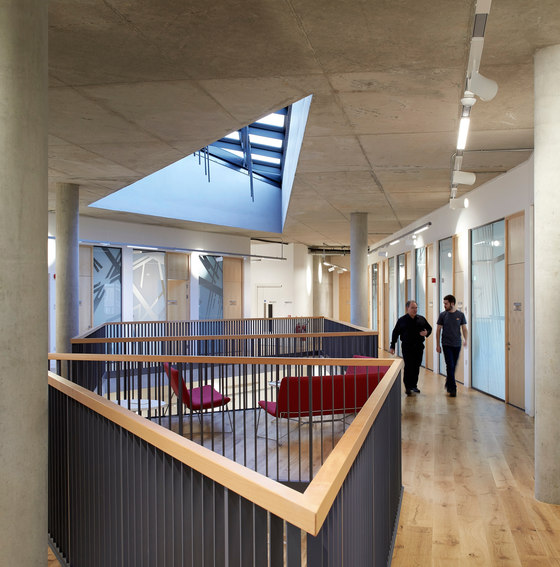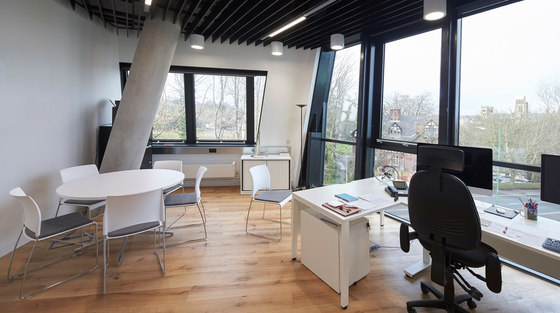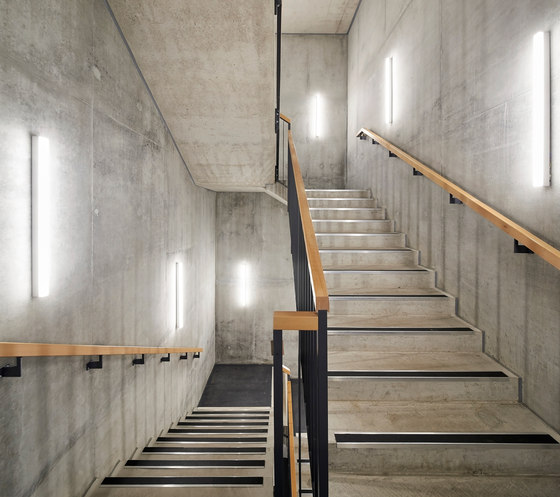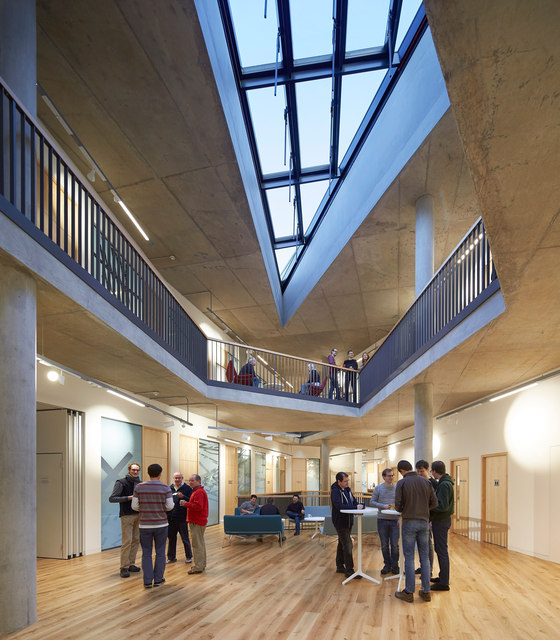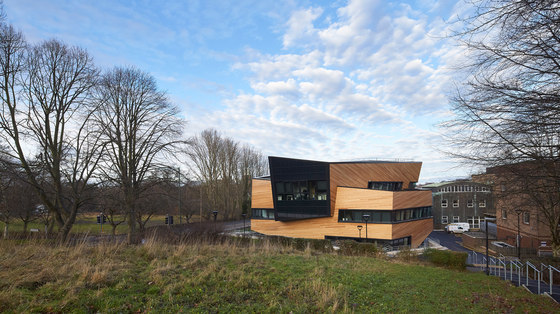Durham, UK— Durham University has opened its new £11.5 million Ogden Centre for Fundamental Physics designed by Studio Libeskind (New York). Durham University is one of the world’s leading institutions in cosmology and space science and it is hoped that the new Ogden Centre building will further cement this position. The new Centre will accommodate the rapid growth and academic success of Durham’s research into fundamental physics, enabling it to maintain its leading global position in the decades ahead.
Located next to the Department of Physics on Lower Mountjoy, South Road, Durham City, UK, the 2,478 square-metre building houses the Institute for Computational Cosmology (ICC), one of the world's premier cosmology research groups, the Centre for Extragalactic Astronomy (CEA) and the Centre for Advanced Instrumentation (CfAI). The new Ogden Centre includes eighty new offices for researchers, postgraduate research students, support staff and visiting academics.
Professor Carlos Frenk, Director of the Institute for Computational Cosmology, at Durham University, said: “The new Ogden Centre for Fundamental Physics represents a wonderful contribution to the unique architectural heritage of Durham City. Its design reflects the requirements of a top-class research centre, dedicated to seeking answers to some of the most fundamental questions about our Universe such as: How and when did our Universe begin? What is it made of? How did galaxies and other structures form? The new building is an amazing place in which to work.”
The Design:
A spiral in plan, the Centre is designed as continuous, stacked and interlocking forms. Clad in a ventilated timber rain screen built from responsibly sourced Scottish larch, the dynamic façade is punctuated with linear bands of operable strip windows and a series of outdoor terraces. In addition, canted curtain walls on the north and south faces bookend the form of the spiral and provide spectacular views of picturesque Durham City and Durham Cathedral.
The active form of the building unifies a rigorous, repetitive programme of private work spaces along its perimeter with a communal multi-story interior space activated by gathering spaces and a massive central skylight. A new identity has been created for the Centre resulting in unique individualized workspace that engenders a sense of connection and community.
Daniel Libeskind said: “This project is an example of how to design a highly-sustainable, dynamic building within tight programme requirements. Light and openness is at the core of the design; at every move in the design process we incorporated simple, yet robust materials and considered the users’ experience to create this important building for Durham University.”
Visitors to the Centre enter through a glazed lobby infused with light. The interiors employ a natural palette of soft grey concrete columns and ceilings, paired with warm wood finishes and frosted glass. Pushing the offices to the perimeter of the Centre allows each space to benefit from natural light and ventilation. In addition, glazed doors and screens further transmit light from the exterior to the central atrium. Generous roof terraces create spaces for impromptu meetings or places to simply relax and enjoy fresh air.
Skylights marshal light into the central atrium and meeting areas. The entire programme of the building is wrapped around a series of flexible, communal spaces. The ground floor areas are open and available to the public, with a seminar/meeting room (100 seats) that can be used for events. The second floor features a central social space where staff and research students can work together on an informal basis.
This central area can also serve as a setting for formal dinners, fundraisers, presentations, or special announcements. Adjacent breakout rooms with videoconferencing facilities will allow group discussions and wider collaboration. The third floor houses additional office space and is open to the floors below.
Engineering:
The complex program and the unique spiral form of the building required creative engineering solutions. Column locations had to be carefully considered, some of them sloping to respond to the architectural geometry of the building, through the unique floor plans. The thoughtfully positioned columns enable flexible room layouts to allow for the University to expand areas and move around in the space – catering to the future needs of the Center.
Arup provided structural, mechanical, electrical and public health, engineering on the project as well as specialist consulting services in acoustics, facades, geotechnics and fire engineering. Andrew Wilkinson, Project Director at Arup said: “The UK has a world-renowned science and research community, and Durham University is no exception. This new facility creates new office and learning space that provides a visually inspiring environment for the next generations’ world-leading researchers and physicists.”
Sustainability:
The Ogden Centre is highly energy efficient: careful attention was paid to quality of the user environment; the selection of sustainable materials; facilities are outfitted with showers and bike racks; its exposed concrete ceilings take advantage of the night-purge effect; LED fixtures are used throughout; renewable energy sources like a ground source heat pump and photovoltaic array on the roof are employed; and rainwater harvesting have been incorporated into the landscape.
Official Opening:
The official opening of the centre will get underway on Thursday, 9 March, with a symposium including architect Daniel Libeskind; Professor Carlos Frenk, Director of Durham University’s Institute of Computational Cosmology; Lord Martin Rees, Astronomer Royal; Professor Hiranya Peiris, Director of the Oskar Klein Centre for Cosmoparticle Physics, in Stockholm; and Professor Mark Hannam, of the School of Physics and Astronomy at Cardiff University. Lord Rees will unveil a plaque formally marking the opening of the new building on the morning of Friday, 10 March.
Durham University
Daniel Libeskind


